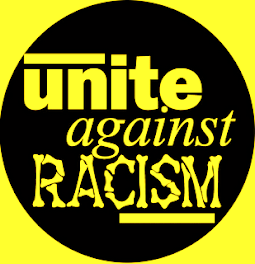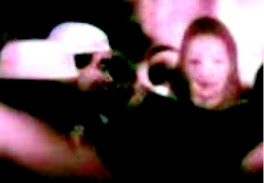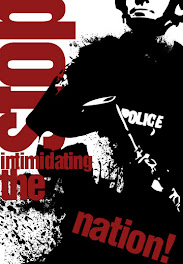Some information about the history of the Malay language and origins of the Jawi script
TRACING THE ORIGINS OF THE JAWI SCRIPT
Source -BERNAMA HERE
The History of the Malay language
Imagine the chasm between Bahasa
In fact, the history of the Malay language is divided into four periods:
Old Malay ( 682 - 1500 C.E. )
Also known as Bahasa Melayu Kuno, was written in scripts of Rencong, Pallava, and Kawi. Even the Jawi script during this period was used extensively together with Sanskrit.
Early Modern Malay (1500-c1850)
The prominence of Malacca which embraced Islamic faith made Malay into a language used in the spread of Islam.
The Malay language underwent radical changes with:
a. Infusion of Arabic, Persian and Hindi Vocabulary.
b. Introduction of Arabic rhetorical style.
c. Changes in grammar based on oral speech.
Portuguese conquest of Malacca in 1511 and subsequent persecution of Muslims contributed to the rise of Bintan and Penyengat as centres of Malay language.
The 17th century also saw the emergence of the great Romances or Hikayat as the Malays recorded their experiences, religious laws and oral literature in Jawi script. Sir Richard O. Winstedt categorized the Hikayat as 'Bahasa Melayu Klasik'.
Late Modern Malay ( c1850 - 1957 )
Late Modern Malay incorporates loan words from Portuguese, Dutch and English. apart from Islam, it has also became a tool to proselytize Christianity as a result of translation of the bible into Malay by Dutch scholars.
On the Riau
It was the dawn of commercialized printing press, the publication of first Malay language newspapers in Arabic and Latin scripts.
Zainal Abidin bin Ahmad, better known as the respected Malay scholar Za'ba, codified Malay grammar into the three-volume "Pelita Bahasa Melayu" in 1941. He also modified the Jawi spelling system. It can be said that pre-independence Malay language was very much influenced by Za'ba's work.
Japanese occupation of the Malay world during World War II hastened independent movements. this led to liberation of
Sejarah kemerdekaan Malaysia and Malay language elevated to the status of Malaysian language or, the national language of
Contemporary Malay (after 1957 )
They tried something called " Ejaan Melindo" but it was too impractical.
THE RENCONG SCRIPT
Rencong script is a writing system used to write Malay in Sumatra (Bengkulu and
The Malay used Rencong or Rencang script, Kawi script and Lampung script in the ancient times.
Studies showed that these writing are related to the ancient Cambodian writings. The script is also related to the Batak script.
Rencong script was written on tree bark, bamboo, horns and lontar.
There were many versions of Rencong scripts, each of them originated from different places in Sumatra and
Click HERE for more information.
“.......This was followed by the "kawi" and "palava" writings, both of Indian origin.
With the coming of Islam, the Malays tried to use the palava or kawi characters to write about Islam, but both were unsuitable as they could not properly pronounce the verses of the Quran and Hadis. ......”
Source -BERNAMA
An example of the Kawi script
See an example below of the word Javanese in the ‘pallava’ (palava) alphabet
Javanese alphabet 
The earliest known writing in Javanese dates from the 4th Century AD, at which time Javanese was written with the Palava alphabet. By the 10th Century, the Kawi alphabet, which developed from Pallava, had a distinct Javanese form.
By the 17th Century, the Javanese alphabet, also known as tjarakan or carakan, had developed into its current form. During the Japanese occupation of
For a period from the 15th Century onwards, Javanese was also written with a version of the Arabic alphabet, called pégon or gundil.
Since the Dutch introduced the Latin alphabet to
Notable features
- Javanese is a syllabic alphabet - each letter has an inherent vowel /a/. Other vowels can be indicated using a variety of diacritics which appear above, below, in front of or after the main letter.
- Each consonants has two forms: the aksara form is used at the beginning of a syllable, while the pasangan form, which usually appears below the aksara form, is used for the second consonant of a consonant cluster and mutes the vowel of the aksara.
- There are a number of special letters called aksara murda or aksara gedhe (great or important letters) which are used for honorific purposes, such as to write the names of respected people.
- The order of the consonants makes the following saying, "Hana caraka, data sawala padha jayanya, maga bathanga" which means "There were (two) emissaries, they began to fight, their valor was equal, they both fell dead"
Used to write Javanese, and in the past Balinese and Sundanese:
Javanese (basa Jawa), an austronesian language spoken by about 75 million people in
The Javanese alphabet was also used to write Balinese and Sundanese, but has been replaced by the Latin alphabet.
Some examples of the Javanese alphabet
Aksara consonants

Pasangan consonants

Aksara murda consonants

Subscript aksara murda consonants




Click on all images for a larger view
Javanese of course differs somewhat from the Malay language, but the alphabets used were similar to the Pallava script used to write the Malay language.
Sample text in Javanese:
Saben uwong kalairake kanthi mardika lan darbe martabat lan hak-hak kang padha. Kabeh pinaringan akal lan kalbu sarta kaajab pasrawungan anggone memitran siji lan sijine kanthi jiwo sumadulur.
Translation
(Article 1 of the Universal Declaration of Human Rights)
Source HERE
The earliest evidence of the existence of the Jawi script was the discovery of inscriptions on a stone dated 702H (1303 AD) and according to Hashim, Sanskrit words could still be seen on the inscribed stone. But the modern day Jawi script is due to the initiative taken to systematise the Jawi script by none other than Zainal Abidin Ahmad, the leading Malay literary figure or better known as Pendeta Za'ba, who produced the "Daftar Ejaan Melayu Jawi-Rumi" (Jawi-Roman Spelling Register), which he worked on in 1938 and only printed in 1949.”
Source -BERNAMA
That is all very educational and most interesting historic information.
The development of any language, and the way it is written, is to me fascinating, and the Malay language appears to have had a more interesting development history than many other languages.
The way various scripts are used in decorative works, scrolls and other works of art is also impressive.
The many and varied forms of Arabic calligraphy, Chinese calligraphy, and others are truly fascinating, as are the illuminated books of old from
Calligraphers are truly remarkable artists who perfect their skills through many years of training and practice.
Long may such scripts last, but in some countries, such as Malaysia, the Jawi Arabic script previously used to write the Malay language is virtually obsolete in this, the 21st, Century.
It is hoped that Jawi is not demeaned by being forcebly put into use for official letterheads, shop and street signs, etc.; those who wish to learn it should be provided with facilities to do so properly.
Politicians should not use Jawi as a political tool to divide the population, all Malaysians, who want to, should be able to learn Jawi, after all, it has nothing to do with religion or race; it is just another way, albeit archaic, of writing in Bahasa Malaysia.
I myself learned it years ago, and can still read it quite well.
Respice, adspice, prospice
- Examine the past, examine the present, examine the future








































No comments:
Post a Comment